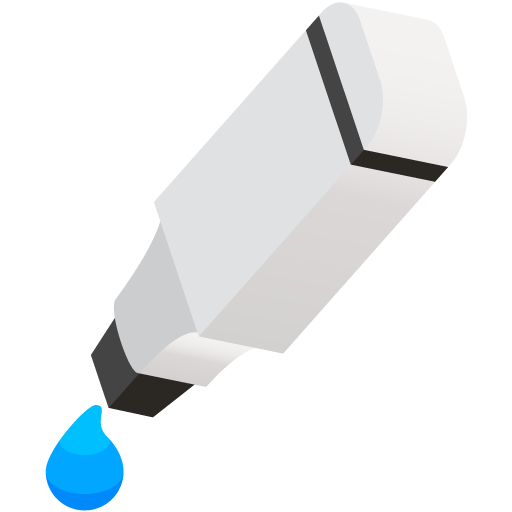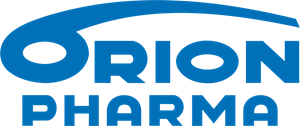Fiprotec Cat ( > 1 kg)
Active substance
ATC code
Species
Cats
Indications
The treatment and prevention of flea infestations (Ctenocephalides felis). The duration of protection against flea infestations is 5 weeks.
Treatment of tick infestations (Ixodes ricinus). Ticks (Ixodes ricinus) on the animal at time of treatment will be killed within 48 hours. Treatment does not protect against new tick infestations.
Dose to be administered and administration route
Route of administration – By topical application to the skin.
For external use only
Dosage: 1 pipette of 0.5 ml per cat.
Method of administration – Use the easy-peel corners to remove a pipette from its blister. Do not puncture the foil with scissors, knives or other sharp instruments, as this may damage the pipette inside.
Hold the pipette upright. Tap the narrow part of the pipette to ensure the contents are within the main body of the pipette. Cut off the top of the pipette with scissors.
Part the coat between the shoulder blades until the skin is visible. Place the tip of the pipette on the skin and squeeze gently to empty its contents onto the skin, preferably at two spots, one at the base of the skull and a second 2 – 3 cm further back.
Care should be taken to avoid excessive wetting of the hair with the product since this will cause a sticky appearance of hairs at the treatment spot. However, should this occur, it will disappear within 24 hours post application.
In the absence of safety studies, the minimum treatment interval is 4 weeks. For optimal control of flea infestations the treatment schedule can be based on the local epidemiological situation.
Adverse reactions
If licking occurs, a brief period of hypersalivation may be observed due mainly to the nature of the carrier.
Suspected adverse reactions such as transient cutaneous reactions at the application site (skin discoloration, local alopecia, pruritus, erythema) and general pruritus or alopecia have been reported very rarely after use. Hypersalivation, reversible neurological signs (hyperaesthesia, depression, nervous signs), vomiting or respiratory signs have been observed very rarely after use. Do not overdose.
The frequency of adverse reactions is defined using the following convention:
- very common (more than 1 in 10 animals treated displaying adverse reaction(s))
- common (more than 1 but less than 10 animals in 100 animals treated)
- uncommon (more than 1 but less than 10 animals in 1,000 animals treated)
- rare (more than 1 but less than 10 animals in 10,000 animals treated) - very rare (less than 1 animal in 10,000 animals treated, including isolated reports).
Dispensing
AVM-GSLSUMMARY OF PRODUCT CHARACTERISTICS
1. NAME OF THE VETERINARY MEDICINAL PRODUCT
Fiprotec 50 mg Spot-On Solution for Cats
2. QUALITATIVE AND QUANTITATIVE COMPOSITION
1 pipette of 0.5 ml contains:
Active substance:
Fipronil ...................................................50.0 mg
Excipients:
Butylhydroxyanisole (E-320)................0.100 mg
Butylhydroxytoluene (E-321)................0.050 mg
Benzyl alcohol (E-1519)...................142.500 mg
For the full list of excipients, see section 6.1.
3. PHARMACEUTICAL FORM
Spot-on solution
Clear colourless to slightly yellow solution
4. CLINICAL PARTICULARS
4.1 Target species
Cats
4.2 Indications for use, specifying the target species
The treatment and prevention of flea infestations (Ctenocephalides felis). The duration of protection against flea infestations is 5 weeks.
Treatment of tick infestations (Ixodes ricinus). Ticks (Ixodes ricinus) on the animal at time of treatment will be killed within 48 hours. Treatment does not protect against new tick infestations.
4.3 Contraindications
In the absence of available data, the product should not be used on kittens less than 8 weeks old and/or weighing less than 1 kg
Do not use on sick (systemic diseases, fever…) or convalescent animals.
Do not use in rabbits, as adverse reactions and even death could occur. Do not use in cases of hypersensitivity to the active substance or to any of the excipients.
4.4 Special warnings for each target species
For optimum control of flea problems in a multi-pet household, all animals in the household should be treated with a suitable insecticide.
Avoid frequent swimming or shampooing of the animal because the maintenance of effectiveness of the product has not been tested in these cases.
Fleas from pets often infest the animal's basket, bedding and regular resting areas such as carpets and soft furnishings which should be treated, in case of massive infestations and at the beginning of the control measures, with a suitable insecticide and vacuumed regularly.
4.5 Special precautions for use
Special precautions for use in animals For external use only.
Avoid contact with the animal’s eyes. In case of accidental eye contact immediately and thoroughly flush the eyes with water.
Animals should be weighed accurately prior to treatment (see also section 4.3). It is important to make sure that the product is applied to an area where the animal cannot lick it off, and to make sure that animals do not lick each other following treatment.
There may be an attachment of ticks. For this reason transmission of infectious diseases cannot be excluded.
The potential toxicity of the product for kittens of less than 8 weeks of age in contact with a treated queen is not documented. Use according to a benefit/risk assessment by the responsible veterinarian.
Do not apply the product on wounds or damaged skin Do not use in non-target animals, especially not in rabbits.
Special precautions to be taken by the person administering the veterinary medicinal product to animals
Keep pipettes in original packaging until ready for use and dispose of used pipettes immediately.
This product can cause mucous membrane and eye irritation. Therefore, contact of the product with mouth and eyes should be avoided.
Persons with known hypersensitivity to fipronil or any of the excipients (see section 6.1) should avoid contact with the product. Avoid contents coming into contact with the fingers. If this occurs, wash hands with soap and water. After accidental ocular exposure the eye should be rinsed carefully with plain water.
Do not smoke, drink or eat during application.
Wash hands after use.
Ingestion of the product is harmful. Prevent children getting access to the pipettes and discard the used pipettes immediately after applying the product. In case of accidental ingestion, seek medical advice and show the package leaflet or the label to the doctor.
Treated animals should not be handled until the application site is dry, and children should not be allowed to play with treated animals until the application site is dry. It is therefore recommended that animals are not treated during the day, but should be treated during the early evening, and that recently treated animals should not be allowed to sleep with owners, especially children.
Other precautions
The product may have adverse effects on painted, varnished or other household surfaces or furnishings.
4.6 Adverse reactions (frequency and seriousness)
If licking occurs, a brief period of hypersalivation may be observed due mainly to the nature of the carrier.
Suspected adverse reactions such as transient cutaneous reactions at the application site (skin discoloration, local alopecia, pruritus, erythema) and general pruritus or alopecia have been reported very rarely after use. Hypersalivation, reversible neurological signs (hyperaesthesia, depression, nervous signs), vomiting or respiratory signs have been observed very rarely after use. Do not overdose.
The frequency of adverse reactions is defined using the following convention:
- very common (more than 1 in 10 animals treated displaying adverse reaction(s))
- common (more than 1 but less than 10 animals in 100 animals treated)
- uncommon (more than 1 but less than 10 animals in 1,000 animals treated)
- rare (more than 1 but less than 10 animals in 10,000 animals treated) - very rare (less than 1 animal in 10,000 animals treated, including isolated reports).
4.7 Use during pregnancy, lactation or lay
Laboratory studies using fipronil have not shown any evidence of teratogenic or embryotoxic effect.
The safety of the product has not been established in pregnant and lactating queens. Use in pregnancy and lactation only in accordance with professional veterinary advice and a benefit/risk assessment.
4.8 Interaction with other medicinal products and other forms of interaction
Do not use simultaneously with other flea products which are applied directly onto the animal.
4.9 Amounts to be administered and administration route
Route of administration – By topical application to the skin.
For external use only
Dosage: 1 pipette of 0.5 ml per cat.
Method of administration – Use the easy-peel corners to remove a pipette from its blister. Do not puncture the foil with scissors, knives or other sharp instruments, as this may damage the pipette inside.
Hold the pipette upright. Tap the narrow part of the pipette to ensure the contents are within the main body of the pipette. Cut off the top of the pipette with scissors.
Part the coat between the shoulder blades until the skin is visible. Place the tip of the pipette on the skin and squeeze gently to empty its contents onto the skin, preferably at two spots, one at the base of the skull and a second 2 – 3 cm further back.
Care should be taken to avoid excessive wetting of the hair with the product since this will cause a sticky appearance of hairs at the treatment spot. However, should this occur, it will disappear within 24 hours post application.
In the absence of safety studies, the minimum treatment interval is 4 weeks. For optimal control of flea infestations the treatment schedule can be based on the local epidemiological situation.
4.10 Overdose (symptoms, emergency procedures, antidotes), if necessary
The risk of experiencing adverse effects (see section 4.6) may increase with overdosing. Itching may occur following treatment.
Overdose application of the product will cause a sticky appearance of hairs at the treatment spot. However, should this occur, it will disappear within 24 hours post application.
4.11 Withdrawal period(s)
Not applicable.
5. PHARMACOLOGICAL PROPERTIES
Pharmacotherapeutic group: Ectoparasiticides for topical use, incl. insecticides. ATC vet code: QP53AX15
5.1 Pharmacodynamic properties
Fipronil is an insecticide/acaricide in the phenylpyrazole family. It acts by inhibiting the GABA complex, binding to the chloride channel and thereby blocking the pre- and post-synaptic transfer of chloride ions across the membrane. This results in uncontrolled activity of the central nervous system and death in insects and acarids.
5.2 Pharmacokinetic particulars
*Absorption
After local application of the product on the cat, absorption of fipronil through the skin is negligible.
*Distribution
After application, a concentration gradient of fipronil is set up on the fur of the animal extending from the point of application to the peripheral areas (lumbar zones, flanks,…).
*Biotransformation
In ‘in vitro’ studies with subcellular liver fractions, the principal metabolite is the sulfone derivative of fipronil. However, this may be of limited relevance ‘in vivo’ as fipronil is poorly absorbed in the cat.
*Elimination
The concentrations of fipronil on the hair decrease with time to attain a level of approximately 1 µg.g –1 two months after treatment.
6. PHARMACEUTICAL PARTICULARS
6.1 List of excipients
Butylhydroxyanisole (E-320)
Butylhydroxytoluene (E-321)
Benzyl alcohol (E-1519)
Diethylene glycol monoethyl ether
6.2 Major incompatibilities
In the absence of compatibility studies, this veterinary medicinal product must not be mixed with other veterinary medicinal products.
6.3 Shelf life
Shelf life of the veterinary medicinal product as packaged for sale: 2 years
Shelf life after first opening the immediate packaging: use immediately
6.4 Special precautions for storage
This veterinary medicinal product does not require any special temperature storage conditions
Keep pipette within blister and box until ready for use, in order to protect from light
6.5 Nature and composition of immediate packaging
A blue pipette is composed of a heat-formed shell (polypropylene and acrylonitrile methyl acrylate copolymer/cyclic olefin copolymer polypropylene/polypropylene) and a film (acrylonitrile methyl acrylate copolymer/aluminium/polyester).
1, 2, 3, 6 pipettes are packed in a cardboard box.
Or
A blue pipette is composed of a heat-formed shell (polypropylene/cyclic olefin copolymer/ethylene-vinyl alcohol copolymer / polypropylene) and a film (polyethylene terephthalate/ aluminium/polypropylene).
The blue pipette is enclosed in an aluminium blister (polyethylene/ polyamide/ aluminium/polyamide/polyethylene and polyamide/aluminium/polyethylene).
1, 2, 3, 4, 6 pipettes are packed in a cardboard box.
Not all pack sizes may be marketed.
6.6 Special precautions for the disposal of unused veterinary medicinal product or waste materials derived from the use of such products
Any unused veterinary medicinal product or waste materials derived from such veterinary medicinal products should be disposed of in accordance with local requirements.
Fipronil may adversely affect aquatic organisms. Do not contaminate ponds, waterways or ditches with the product or empty containers.
7. MARKETING AUTHORISATION HOLDER
Beaphar B.V.
Drostenkamp 3
8101 BX Raalte
The Netherlands
8. MARKETING AUTHORISATION NUMBER
Vm 41941/4000
9. DATE OF FIRST AUTHORISATION
08 August 2014
10. DATE OF REVISION OF THE TEXT
August 2019
Approved: 08 August 2019


| Art. Nr. | 41941/4000 |
|---|---|
| EAN | 8711231155187 |
 TRUSTED SOURCE
TRUSTED SOURCE








